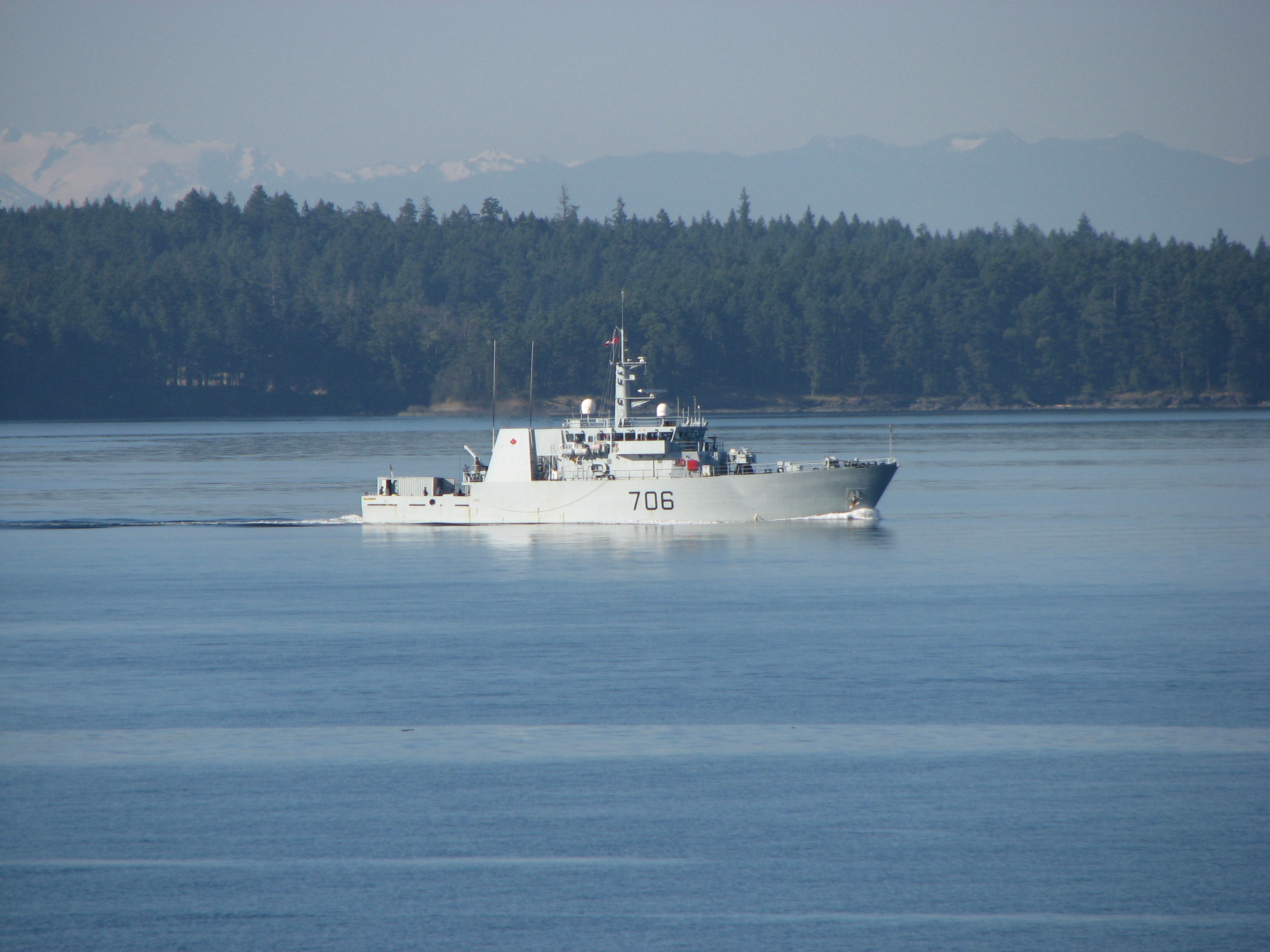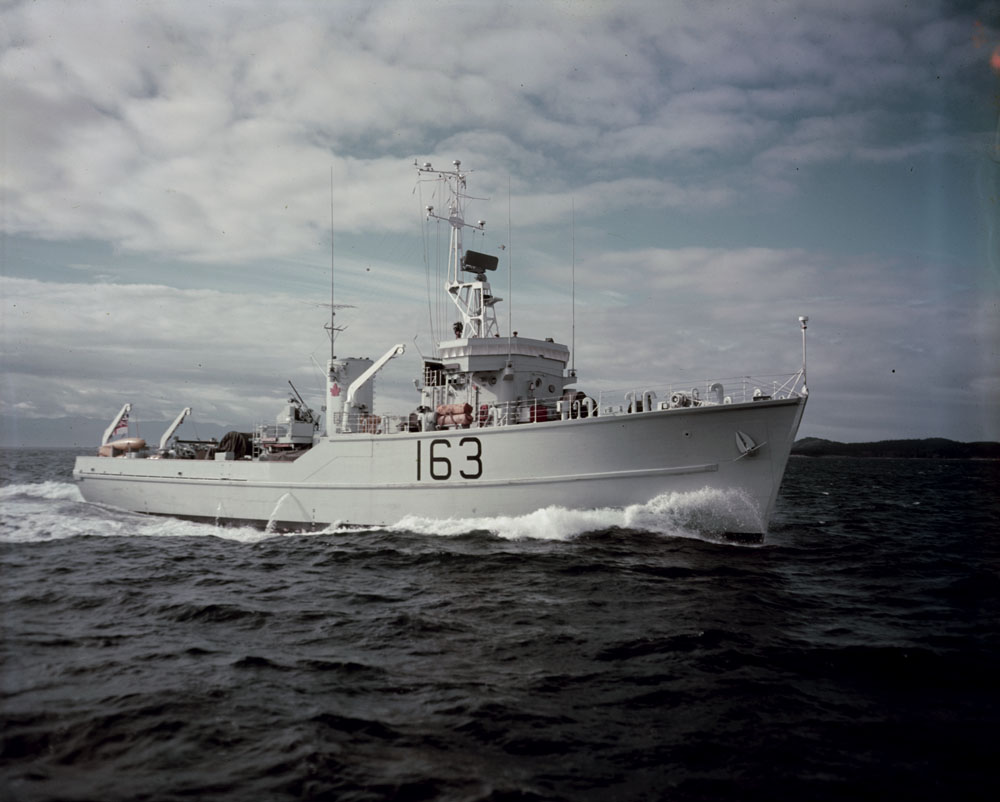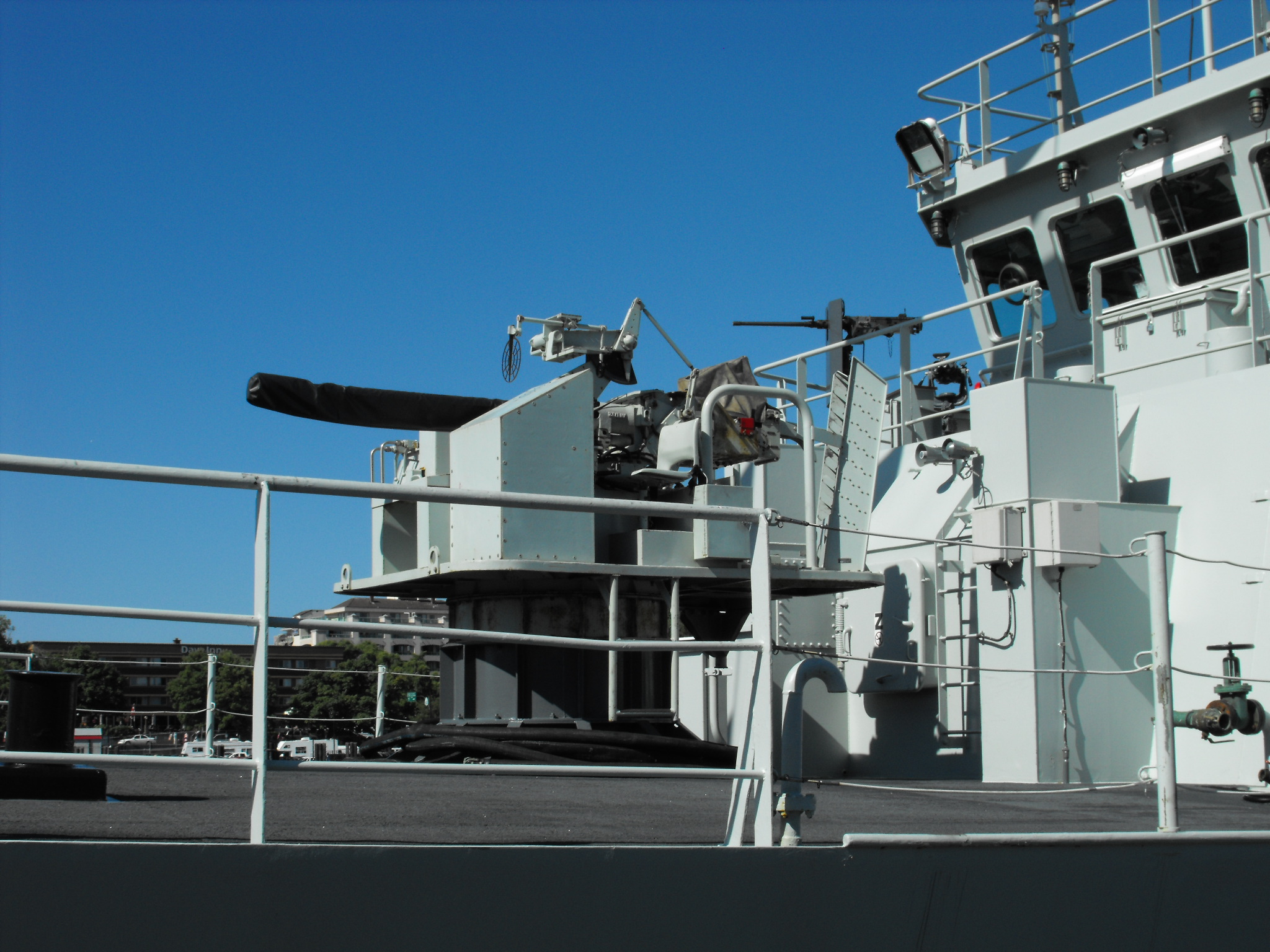Maritime Coastal Defence Vessel Project on:
[Wikipedia]
[Google]
[Amazon]
 The Maritime Coastal Defence Vessel Project (MCDVP) was a procurement project undertaken by the
The Maritime Coastal Defence Vessel Project (MCDVP) was a procurement project undertaken by the
 There were five main criteria for the design. The ships had to be built in Canada, they had to be inexpensive to build, they had to be operable by naval reservists, the design had to have role flexibility included, and they had to be inexpensive to operate. This was exemplified by the Royal Navy's which was operated by the Royal Navy Reserve. The ships were to replace the and s, s and Royal Canadian Mounted Police coastal launches in those roles.
The federal government's procurement agency, the Department of Public Works, placed a Request for Proposal in September 1988 to Canadian shipbuilders for construction of twelve MCDVs. Six proposals were submitted, one from Finco Engineers, one from Halifax Dartmouth Industries (HDIL), one from Saint John Shipbuilding, one from
There were five main criteria for the design. The ships had to be built in Canada, they had to be inexpensive to build, they had to be operable by naval reservists, the design had to have role flexibility included, and they had to be inexpensive to operate. This was exemplified by the Royal Navy's which was operated by the Royal Navy Reserve. The ships were to replace the and s, s and Royal Canadian Mounted Police coastal launches in those roles.
The federal government's procurement agency, the Department of Public Works, placed a Request for Proposal in September 1988 to Canadian shipbuilders for construction of twelve MCDVs. Six proposals were submitted, one from Finco Engineers, one from Halifax Dartmouth Industries (HDIL), one from Saint John Shipbuilding, one from
 SNC-Lavalin was instructed by the Department of Public Works to use "Commercial‐off‐the‐Shelf equipment" which drove costs higher. One area of reported controversy was the decision by the government to only arm the ships with .50 calibre machine guns. Subsequent design modifications resulted in a single Bofors 40 mm/60 calibre Mk 5C gun being added to the bow of each ship.
Another area of controversy apparently resulted with the means by which the ships were to be ballasted in order to adjust the trim of the ships. The shipyard proposed to use concrete, which was countered by government procurement officers and SNC-Lavalin engineers who proposed to use water. Water was susceptible to being pumped out, rendering the vessels unstable. Lead was proposed but rejected by the government so in the end
SNC-Lavalin was instructed by the Department of Public Works to use "Commercial‐off‐the‐Shelf equipment" which drove costs higher. One area of reported controversy was the decision by the government to only arm the ships with .50 calibre machine guns. Subsequent design modifications resulted in a single Bofors 40 mm/60 calibre Mk 5C gun being added to the bow of each ship.
Another area of controversy apparently resulted with the means by which the ships were to be ballasted in order to adjust the trim of the ships. The shipyard proposed to use concrete, which was countered by government procurement officers and SNC-Lavalin engineers who proposed to use water. Water was susceptible to being pumped out, rendering the vessels unstable. Lead was proposed but rejected by the government so in the end
 The Maritime Coastal Defence Vessel Project (MCDVP) was a procurement project undertaken by the
The Maritime Coastal Defence Vessel Project (MCDVP) was a procurement project undertaken by the Department of National Defence Department of Defence or Department of Defense may refer to:
Current departments of defence
* Department of Defence (Australia)
* Department of National Defence (Canada)
* Department of Defence (Ireland)
* Department of National Defense (Philipp ...
beginning in the mid-1980s to find a replacement to fill the minesweeper, coastal patrol and reserve training needs of the Canadian Forces, replacing the and s, s and Royal Canadian Mounted Police coastal launches in those roles. After construction these vessels became known as the Royal Canadian Navy's maritime coastal defence vessels (MCDVs).
Project history
Born from a need that dated back to the 1970s, the MCDV project was established to restore minesweeping capabilities to the Canadian Navy along with providing at-sea training vessels for reservists. The decision to begin the program began in the 1987 National Defence White Paper under the concept of "Total Force". This was intended to mask reductions in the regular force by increasing the capabilities of the reserve forces. This led the navy to add minesweeping and coastal patrol duties to the reserve force's list of duties. There were five main criteria for the design. The ships had to be built in Canada, they had to be inexpensive to build, they had to be operable by naval reservists, the design had to have role flexibility included, and they had to be inexpensive to operate. This was exemplified by the Royal Navy's which was operated by the Royal Navy Reserve. The ships were to replace the and s, s and Royal Canadian Mounted Police coastal launches in those roles.
The federal government's procurement agency, the Department of Public Works, placed a Request for Proposal in September 1988 to Canadian shipbuilders for construction of twelve MCDVs. Six proposals were submitted, one from Finco Engineers, one from Halifax Dartmouth Industries (HDIL), one from Saint John Shipbuilding, one from
There were five main criteria for the design. The ships had to be built in Canada, they had to be inexpensive to build, they had to be operable by naval reservists, the design had to have role flexibility included, and they had to be inexpensive to operate. This was exemplified by the Royal Navy's which was operated by the Royal Navy Reserve. The ships were to replace the and s, s and Royal Canadian Mounted Police coastal launches in those roles.
The federal government's procurement agency, the Department of Public Works, placed a Request for Proposal in September 1988 to Canadian shipbuilders for construction of twelve MCDVs. Six proposals were submitted, one from Finco Engineers, one from Halifax Dartmouth Industries (HDIL), one from Saint John Shipbuilding, one from Allied Shipbuilders Allied Shipbuilders Ltd is a privately held shipbuilding and ship repairing company established in Canada in 1948.
Company profile
Founded in 1948 by Arthur McLaren (1919-1999), Allied Shipbuilders is one of the older continually operatin ...
, one from Canadian Shipbuilding & Engineering, and one from MIL-Davie. The federal government awarded the $750 million contract in 1992 for the design and construction of the twelve new MCDVs to Finco Engineers, a subsidiary of Lavalin.
Design
Roughly the size of Second World Warcorvette
A corvette is a small warship. It is traditionally the smallest class of vessel considered to be a proper (or " rated") warship. The warship class above the corvette is that of the frigate, while the class below was historically that of the slo ...
s, the MCDVs were built to mercantile standards to save money. These vessels were to be designed for crewing by a combined crew of approximately 37 Canadian Forces naval reservists and regular force members and were to have the capability to quickly change out "modularized mission packages" ranging from minesweeping to route survey
Hydrographic survey is the science of measurement and description of features which affect maritime navigation, marine construction, dredging, offshore oil exploration/offshore oil drilling and related activities. Strong emphasis is placed o ...
to coastal patrol (anti-smuggling/immigration law enforcement operations) to fisheries patrol duties. In order to perform their varied duties the ''Kingston''-class vessels are designed to carry up to three ISO containers with power hookups on the open deck aft in order to embark mission-specific payloads. The seven module types available for embarkation include four route survey, two mechanical minesweeping and one bottom inspection modules.
The ''Kingston'' class displace and are long overall with a beam
Beam may refer to:
Streams of particles or energy
*Light beam, or beam of light, a directional projection of light energy
**Laser beam
*Particle beam, a stream of charged or neutral particles
**Charged particle beam, a spatially localized grou ...
and a draught of . The coastal defence vessels are powered by four Jeumont ANR-53-50 alternators coupled to four Wärtsilä UD 23V12 diesel engines creating . Two LIPS Z-drive azimuth thrusters are driven by two Jeumont CI 560L motors creating and the Z drives can be rotated 360°. This gives the ships a maximum speed of and a range of at .
The ''Kingston'' class is equipped with a Kelvin Hughes navigational radar using the I band and a Kelvin Hughes 6000 surface search radar scanning the E and F bands. The vessels carry an AN/SQS-511 towed side scan sonar for minesweeping and a Remote-control Mine Hunting System (RMHS). The vessels are equipped with one Bofors 40 mm/60 calibre Mk 5C gun and two M2 machine guns.
Construction and design issues
 SNC-Lavalin was instructed by the Department of Public Works to use "Commercial‐off‐the‐Shelf equipment" which drove costs higher. One area of reported controversy was the decision by the government to only arm the ships with .50 calibre machine guns. Subsequent design modifications resulted in a single Bofors 40 mm/60 calibre Mk 5C gun being added to the bow of each ship.
Another area of controversy apparently resulted with the means by which the ships were to be ballasted in order to adjust the trim of the ships. The shipyard proposed to use concrete, which was countered by government procurement officers and SNC-Lavalin engineers who proposed to use water. Water was susceptible to being pumped out, rendering the vessels unstable. Lead was proposed but rejected by the government so in the end
SNC-Lavalin was instructed by the Department of Public Works to use "Commercial‐off‐the‐Shelf equipment" which drove costs higher. One area of reported controversy was the decision by the government to only arm the ships with .50 calibre machine guns. Subsequent design modifications resulted in a single Bofors 40 mm/60 calibre Mk 5C gun being added to the bow of each ship.
Another area of controversy apparently resulted with the means by which the ships were to be ballasted in order to adjust the trim of the ships. The shipyard proposed to use concrete, which was countered by government procurement officers and SNC-Lavalin engineers who proposed to use water. Water was susceptible to being pumped out, rendering the vessels unstable. Lead was proposed but rejected by the government so in the end steel
Steel is an alloy made up of iron with added carbon to improve its strength and fracture resistance compared to other forms of iron. Many other elements may be present or added. Stainless steels that are corrosion- and oxidation-resistant ty ...
was used for ballast. The end result of the design was that it was not adequate for the sea states that the vessels worked in and were not popular postings.
The vessels were all constructed by Halifax Shipyards and entered service between 1996 and 1999. All of the class were named after Canadian cities. The majority of the ships in the class perpetuated names of Second World War corvettes.
See also
*Canadian Patrol Frigate Project
The Canadian Patrol Frigate Project (CPFP) was a procurement project undertaken by the Department of National Defence of Canada beginning in 1975 to find a replacement for the 20 combined ships of the , , , and classes of destroyer escorts. The ...
, another Canadian procurement project of the same era
References
Notes
Citations
Sources
* * * * {{cite book , editor-last=Saunders , editor-first=Stephen , year=2008 , title=Jane's Fighting Ships 2008–2009 , edition=111th , publisher=Jane's Information Group , location=Surrey , isbn=978-0-7106-2845-9 , oclc=225431774 Royal Canadian Navy Canadian defence procurement